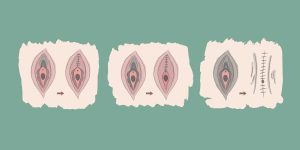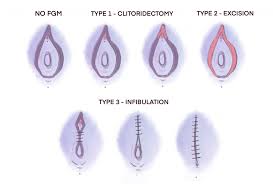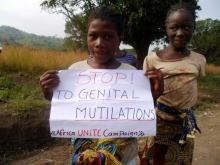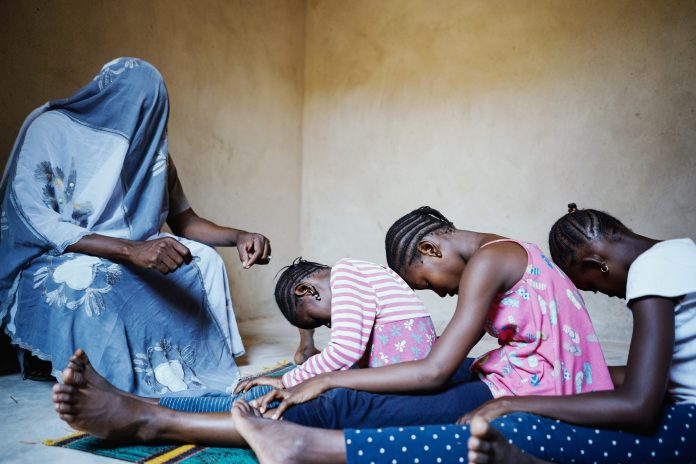No fewer than 4.3 million girls are at risk of female genital mutilation this year and the number is projected to reach 4.6 million by 2030, the United Nations Children’s Fund and the United Nations Population Fund said.
The international agencies also said Nigeria accounts for the third highest number of women and girls who have undergone FGM.
In a joint statement made available to our correspondent, the agencies noted that the world will miss the target of ending FGM by 2030 without urgent action.

February 6 is the International Day of Zero Tolerance for Female Genital Mutilation, to amplify and direct the efforts on the elimination of this practice.
The theme for this year is, “Partnership with men and boys to transform social and gender norms to end FGM”.
FGM comprises all procedures that involve partial or total removal of the external female genitalia, or other injuries to the female genital organs for non-medical reasons.
“This year, 4.3 million girls are at risk of female genital mutilation, according to the latest estimates. This number is projected to reach 4.6 million by 2030, as conflict, climate change, rising poverty, and inequality continue to hinder efforts to transform gender and social norms that underpin this harmful practice and disrupt programmes that help protect girls.

“FGM remains widespread in Nigeria. With an estimated 19.9 million survivors, Nigeria accounts for the third highest number of women and girls who have undergone FGM worldwide, with the risk of cutting highest in the first five years (86 per cent of girls circumcised before age 5 – National Demographic and Health Survey 2018).
“FGM prevalence in Nigeria is decreasing among women aged 15-49 according to data from the 2021 Multiple Indicator Survey (18 per cent to 15 per cent 2016-17/2021). Similarly, the prevalence among girls aged 0-14 decreased from 25 per cent to eight per cent during the same time period (MICS 2021).
This significant decrease in prevalence among girls aged 0-14 is a welcome development, given that an estimated 86 per cent of females aged 15-49 were subjected to FGM before the age of 5 (NDHS 2018),” the statement read in part.

It also said 12 states had a prevalence higher than the national prevalence, ranging from 9 per cent in Edo to 35 per cent in Kwara and Kano, at the same time.
The organisations said FGM violates the rights of women and girls and limits their opportunities for the future in health, education, and income.
“Rooted in gender inequality and power imbalances, it is an act of gender-based violence that harms girls’ bodies, dims their futures, and endangers their lives.
“Changing gender and social norms that encourage FGM is critical. Men and boys are powerful allies in the effort. Increasingly they are challenging power dynamics within their families and communities and supporting women and girls as agents of change.”
Meanwhile, the statement noted that the UNFPA-UNICEF global Joint Programme on the Elimination of FGM has supported over 3,000 initiatives within the last five years where men and boys actively advocate to bring an end to the practice.
“In Nigeria, since implementation began in 2018, UNJP has supported the engagement of 807 men’s and boys’ networks to actively advocate to bring an end to the practice. It has done this by providing opportunities and safe spaces for critical reflection on gender discrimination, power dynamics, positive masculinities, and comprehensive sexual and reproductive health education targeting men and boys, so they understand the consequences of FGM.”

Global Health eLearning Center
The UNFPA Resident Representative, Ulla Mueller said men and boys remain key partners in addressing gender inequalities and harmful practices as we all collaboratively join hands to deliver the global promise of eliminating FGM by 2030.
The UNICEF Nigeria Country Representative, Cristian Munduate also said “As a result of our collective efforts, we are witnessing significant opposition from men and boys to FGM. Today, men and boys are more receptive to change than before, and in some communities, they are more likely to disapprove of female genital mutilation and domestic violence than women and girls.”
“This year, on the International Day of Zero Tolerance for FGM, we call on all stakeholders to partner with and engage men and boys to shift unequal power relations and challenge the attitudes and behaviours caused by gender inequality that leads to FGM.
“Integrate gender-transformative approaches and changing social norms into anti-FGM programmes.
“Invest in national-level policies and legislation protecting the rights of girls and women, including the development of national action plans to end FGM.
“Today is a reminder of the urgent need for even more targeted and concerted efforts to turn our shared goal of ending FGM into a reality. We must work together with all stakeholders – including men and boys – to protect the millions of girls and women at risk and consign this practice to history,” the statement added.


